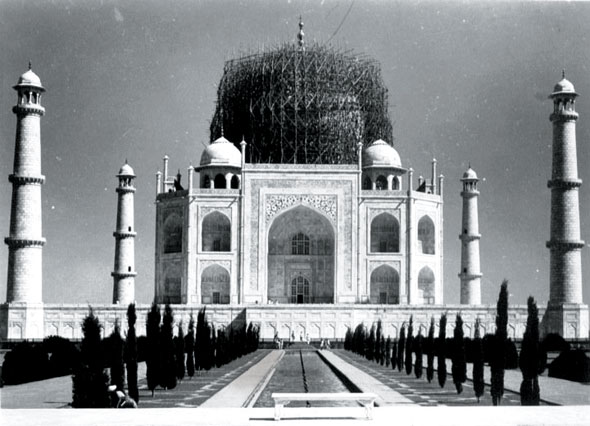Scaffolding
Everywhere that is, except Asia, where fearless skyscraper construction teams still boldly cling to macramé-like patterns formed from sticks of bamboo. And why not? After all, the Taj Mahal was saved from Japanese bombing during the Second World War after being covered in a vast scaffold ‘hat’ designed to disguise it as a pile of abandoned bamboo.

Neil, our painter, is a star, but he’s not Michelangelo, who not only decorated the Sistine Chapel with his head bent backwards (he only lay down for the really tricky bits), but also designed his own scaffold in order to reach the ceiling. Not wanting to upset the Pope by closing down the services, he constructed a leg-free wooden platform suspended from holes chiselled above the windows – they are still the only bits not painted and were used again (along with his system) for the recent renovation works.

Owners with larger houses, like Tim and Deirdre up on the East Hill in their Lutyen-sinspired mansion, often cut their losses and buy their own poles – it helps to have spare acres in which to store them. However, there is the small issue of getting someone to put it up – and down – safely.
Ours went up relatively painlessly, although Neil is taking no chances and on the advice of the hardened ‘scaffs’ who performed the intricate steel lacework on our 1-in-3 gradient, he bought one of their fetching Village People-style safety harnesses. I’m not sure he really needs to wear it to the pub, but it can’t do any harm.
Next week: Gutter snipes...



